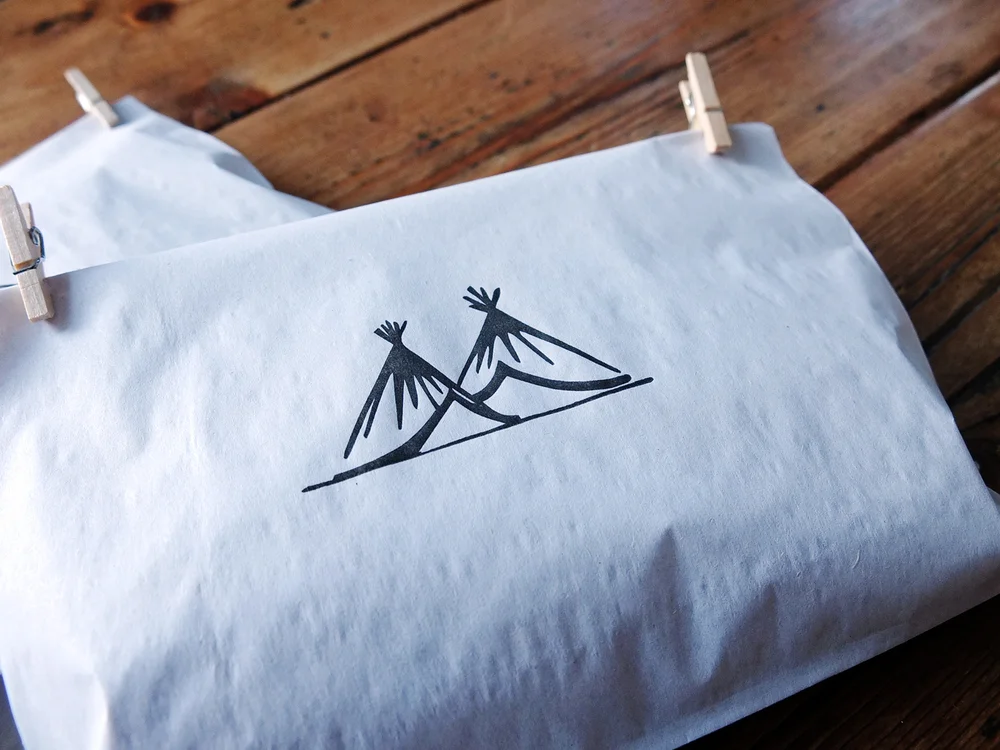Letterpress Printing - Impression
In continuation from my introduction to letterpress printing post I wanted to go into a little more detail about ‘impression’ in letterpress printing.As I mentioned it is the actual printing press and process of pressing the plate into the paper that allows us to create a beautiful impressed texture.However as you might have guessed it is not quite as simple as that...
'Kiss' vs Deep Impression
Originally printing presses were used for all types of printing, so it was up to the skill of the printer to get a flat ‘kiss’ impression. Where the minimum pressure was used to get an even print, effectively the printers aim was to get the plate and paper to ‘kiss’ one another lightly touching but making no impression.
Nowadays the impression texture is one of the characteristics that letterpress has become known for so conversely printers are trying to find ways to get deeper impression!
Generally printers aim to get as deep impression as possible without the print showing through on the back. Of course if you don’t want to print on the back – you could opt to have a deeper print for your letterpress wedding invitations.
In the image above these wedding place setting cards have been printed with and extremely deep impression. This does mean the indentation shows through strongly on the back. However as these are folding place cards the back won't be seen nor is it going to be written on so it was decided in this circumstance that a deep impression was preferred.
What affects impression?
Paper Thickness
Obviously the thickness of the card stock will affect how deep the impression can be see below for example prints on different thicknesses. Thickness is often given in gsm – to give you some comparison digital print paper is usually 80gsm and greetings cards are usually around 270gsm. We print all our 'Designed for you' invitations and save the dates on seriously thick 640gsm card. Whilst all information cards RSVP's and the like we choose 300gsm card.
IMAGES: (Left)Thin 40-50gsm Paper bag, (middle) 270gsm card, (right) Thick 640gsm card
Paper Material
Papers are all made from different materials from traditional mulch (trees) to elephant poo – you can find lots of products on the market. Cotton Rag – is the most responsive to letterpress impression because it is soft compresses well beneath the print.
Images : (left) 100% Cotton Rag, (middle) 100% Recycled paper stock (right) 100% recycled kraft card
Press
Presses come in lots of shapes and sizes; table-top, treadle platen, cylinder and motorised. These will all have different characteristics, generally speaking the bigger the press the more pressure it can generate. Platen presses are most commonly used for letterpress wedding invitations due to the force they create, the print size, size of run and registration control.
Images : (left) Table Top Press, (right) Treadle Press
Printer, customer & personal preference....
Letterpress printing is a traditional skilled trade. Each item is individually printed and the printer controls the level of impression by using backing papers on the press. The printer has much greater control of the final product than with a digital print and each print takes a little bit of love to create! So it is up to you to deiced how deep you want to go and whether you mind if the print comes through on the back.
In the photos below the prints are using the same 640gsm cotton paper stock but the final result is very different...
Images : (left) Deep Impression Print, (right) Kiss impression print
Hopefully this simple overview gives you a better idea what you are looking for with letterpress printing – and how to get the finish you want with your prints. If you have any questions at all please ask!













